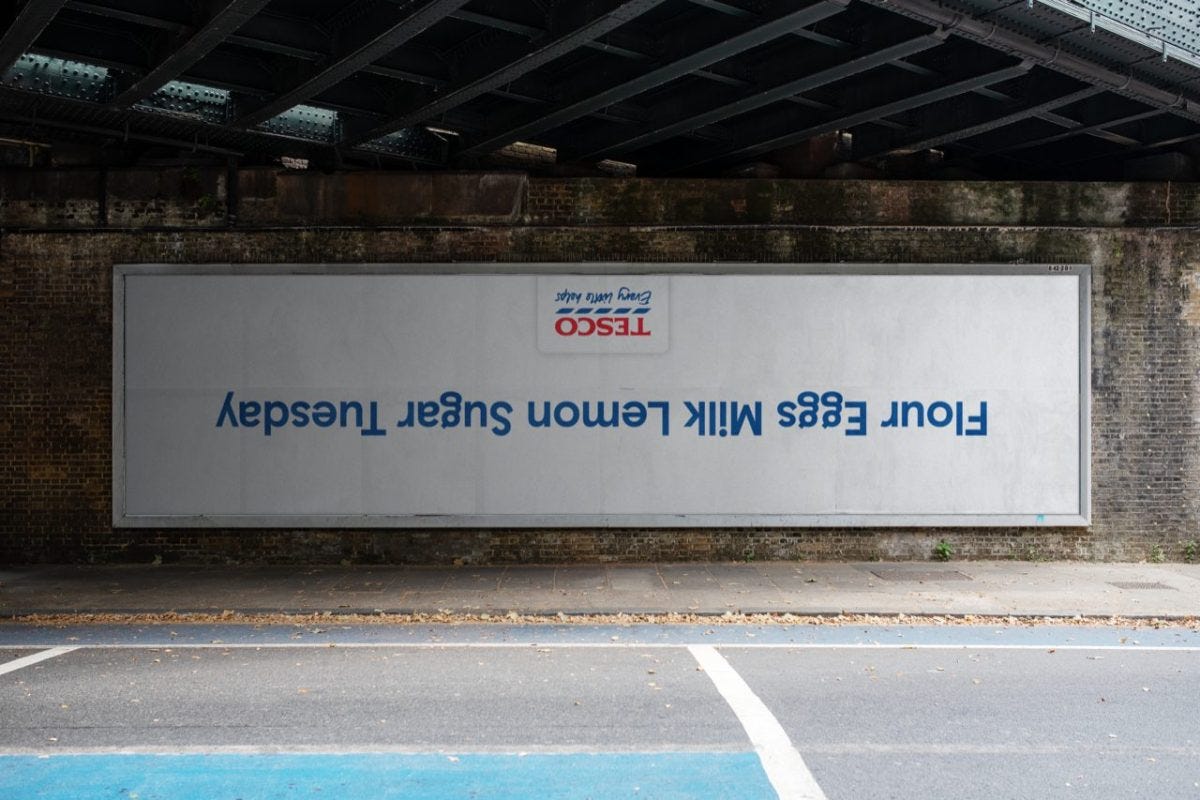Popular, yet unpopular
There's a longstanding divide between being critically lauded and true popularity. What is the era of large-scale entertainment platforms doing to that rift?
Even though I’m a middle-aged man in my forties, I try to keep up with the latest trends. I may not have actually ever played Fortnite or Roblox, but I’ve read a few long articles about them. That still counts, right?
I was caught completely cold this weekend on Instagram though. My feed included a Reel from adidas, featuring a male footballer scoring a goal. This in itself is not unusual. What was unusual was that I didn’t recognise the player or the kit. Plus, it seemed to be a pretty amateur goal for a big brand to be sharing.
I forgot all about the video until there was some chat in our team Slack about The Sidemen organising a sold-out football match at Wembley. My YouTube trending feed (often my go-to source of what’s hot) also featured KSI and Mr Beast decked out in head-to-toe three stripes, and suddenly, the adidas video all made sense.
The consensus in the team chat was that the match was not for us. Creators may well be the new athletes, but I’m still probably not going to tune in. It’s not for people like me - and that’s exactly the point. Our role in agencies is often to help clients understand what such trends might mean. We don’t have to personally enjoy them to gauge their impact and relevance.
But in a world dominated by hot takes, these kinds of critical analyses can be a decidedly lukewarm way to approach what’s happening in our world. Everything, particularly in the circles of my LinkedIn feed, must be Marmite. You must either love or hate the upside-down Tesco pancake billboard. There is no in-between.
Our Marmite world also contributes to a rise in the hot take piece which essentially asks the same question in different formats: “Why is this thing I don’t like popular?”
Two cases in point from the past couple of weeks. First, John Harris (great writer, highly recommend his book The Last Party, about the Britpop years) went on an anti-Spotify rant in The Observer last weekend. Harris bemoans the concept of “Spotifycore” - essentially music that’s not so boring that it’s generic but isn’t intense or in your face. It’s the direct progeny of the wildly popular lofi girl on YouTube. Harris feels that artists have been incentivised to create such music, given its prevalence on Spotify’s “algotorial” (part algorithm, part editorially-curated) playlists.
A piece in Vox struck a similar tone last month, bemoaning “the strange repulsion of Instagram Reels” and arguing that describing something as “perfect for Reels”:
“Is a sign of being off or unwelcome; basic but also subtly repulsive.”
Author Alex Abad-Santos highlights how Reels provides a markedly different experience to TikTok with its extremely basic algorithms. Reels regularly serves up engagement-bait videos and lowest-common-denominator slop over anything with more cultural cachet (something of a trend on Meta platforms generally, you might argue).
Both pieces fail to ask the critical question: If the experience of using both Reels and Spotify is so bland and generic, why do people continue to use them in their millions? If there were no audience for this stuff, it would disappear almost instantly, given that both Meta and Spotify are cold, hard agents of capitalism with shareholders to appease.
They don’t care about what’s on their platforms as long as people spend their time with them. If the Reels algorithm were really that bad, if Spotifycore really so bland, the user data would go down, and both Adam Mosseri and Daniel Ek would make the necessary changes to switch their algorithmic recommendations up.
Harris’s point that the nature of songwriting has changed since the advent of Spotify is supported by an excellent study by The Pudding into how songs now pack a lot more into their first ten seconds to grab your attention on those algotorial playlists. Artists and songwriters may write music with the casual Spotifycore listener in mind.
But it was ever thus in the music industry. Record labels and producers chase the fashion and then milk it for all it’s worth until the next trend comes along, and the focus switches to that. Look at grunge, Britpop, punk, boybands, the already-retro smokey pop vibes of Amy Winehouse and Corinne Bailey-Rae… I could go on.
Just because mainstream tastes are not your vibe doesn’t mean they instantly lack value. It’s arguably a much more valuable exercise to understand why Spotifycore is so popular, or what drives people to watch Reels over TikTok, Shorts or Netflix. These are entry points to potentially fascinating pieces of research.
But we don’t have that research. Instead, we have a prevalent cultural discourse (mainly across the intersection of media and Substack) about AI slop, ultra-processed content and empty feelings engendered by extended Reels binges.
I can’t escape the feeling that this discourse boils down to the age-old discussion of high culture vs low culture. The tension between what’s critically popular and what’s actually popular.
Sometimes, those two sets of opinions cross over, but more often, they do not. It feels like everyone loves The White Lotus, but it’s nowhere near the top of the most popular TV shows. Or as
showed a couple of weeks ago, you have the curious case of Coldplay, who remain stubbornly, resolutely popular despite being critically derided for almost their whole career.When it comes to entertainment, most people want the easy option. They want to stick the radio on and leave it running in the background, watch what’s on linear TV, or watch what the Netflix algorithms recommend.
Rather than arguing about what’s good or what’s ultra-processed, I think it’s more interesting to analyse how the speed and scale of the big social and entertainment platforms have changed our understanding and sense of what is popular.
If you want to keep up with what the casual, lean-back music listener enjoys, for example, there’s no longer a Top of the Pops or a single definitive chart showing you who or what is popular. Yes, Spotify has charts, but often the songs are sticky, and the data doesn’t go as far as showing which algotorial playlists are the most popular or influential.
We lack the same method for keeping up with what’s popular on Reels and TikTok. We can track the TikTok trends, but it’s a full-time job, and also, they tend to be subculture-specific. That bird’s eye view, the “Twitter trending topics” summary of streaming, is pretty much impossible to capture.
That speed and scale, alongside a lack of consensus around what is popular, means that brands and businesses who want to tap into popular culture face some important strategic choices. You can chase the big, properly mainstream trends, but you risk either getting drowned out in the noise or finding that the trend has moved on by the time you hijacked it (Brat summer had plenty of failed attempts at this).
Or you can take the arguably more productive route and identify the subcultures and specific interests of target audiences. Who do you want to reach, and what do they enjoy watching and listening to? And then crucially - why do they enjoy that so much?
We can’t fall into the trap of assuming what we see is all there is or designing our campaigns and creative assets for ourselves. And that means getting out into the world and getting deliberately uncomfortable, exploring trends, memes and posts that might initially make no sense to us. By doing so we can not only broaden our horizons but also develop richer campaign ideas that are much more likely to cut through.





